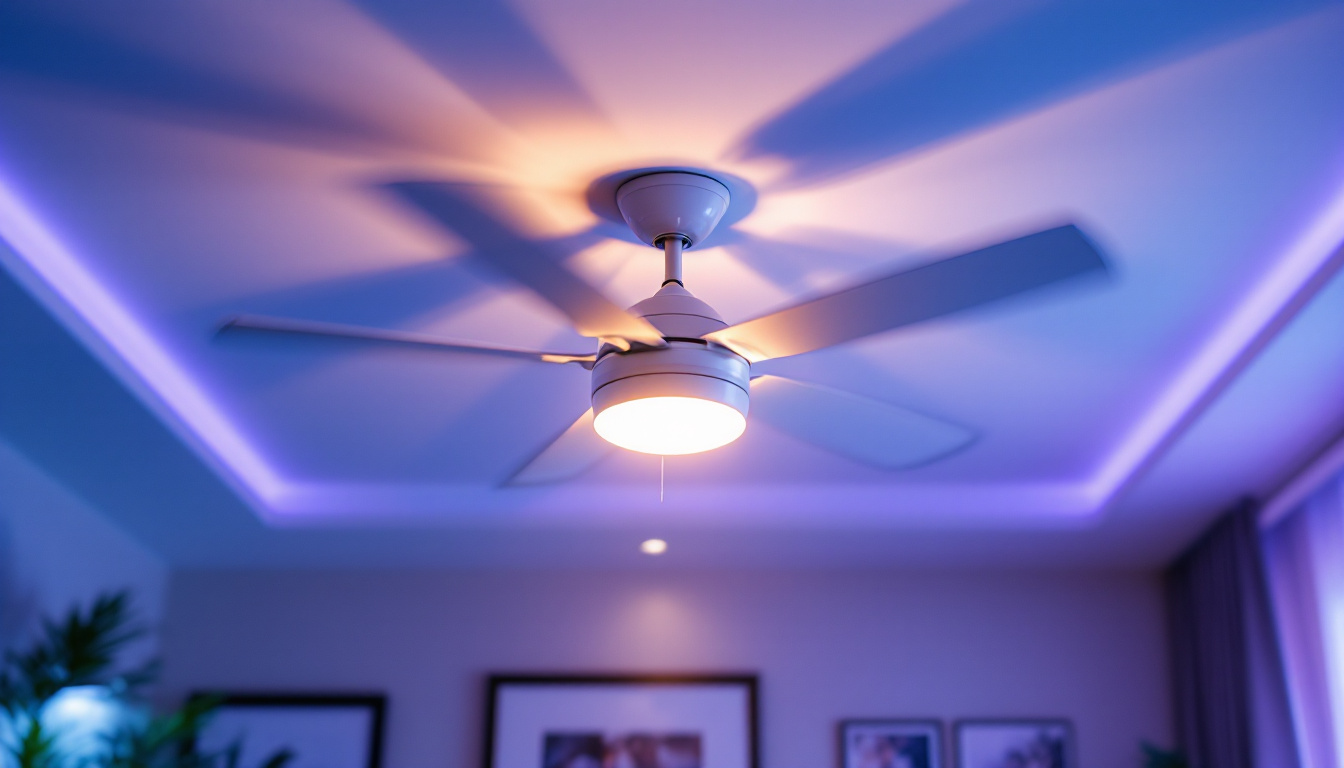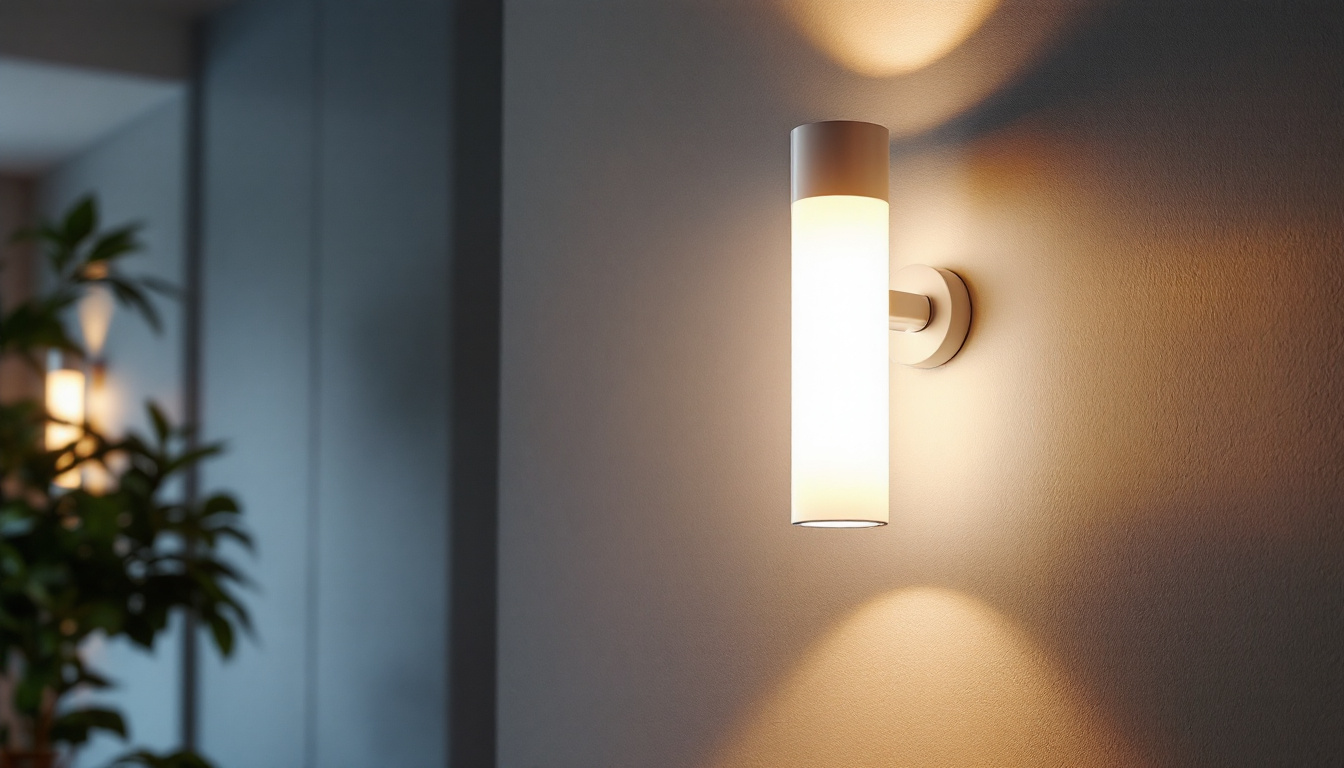
Ceiling fans are a staple in many homes and commercial spaces, offering both functional and aesthetic benefits. For lighting contractors, understanding the nuances of ceiling fans is crucial, especially as they often work in conjunction with lighting fixtures. This article aims to demystify ceiling fans, providing essential insights that every lighting contractor should know.
Ceiling fans serve multiple purposes, from improving air circulation to enhancing the overall design of a room. They come in various styles, sizes, and functionalities, making it essential for contractors to be well-versed in their features. Beyond their practical applications, ceiling fans can also contribute to energy efficiency by allowing homeowners to reduce reliance on air conditioning during warmer months, thereby lowering energy bills and promoting a more sustainable lifestyle.
There are several types of ceiling fans available on the market, each designed for specific needs. The most common types include:
Each type of fan has its unique installation requirements and operational characteristics, making it vital for contractors to understand their specifications. Additionally, some fans come equipped with smart technology, allowing homeowners to control them via smartphone apps or voice commands, which adds a layer of convenience and modernity to home living.
The design and size of fan blades significantly impact the fan’s performance. Blade length typically ranges from 30 to 60 inches, and the number of blades can vary from three to five or more. Wider blades can move more air, while fewer blades may offer a more modern aesthetic.
Contractors should consider the room size when selecting a fan. A larger room may require a fan with longer blades to ensure effective air circulation, while smaller spaces can benefit from compact designs. Moreover, the pitch of the blades—how steeply they are angled—also plays a crucial role in airflow efficiency. A steeper pitch can enhance air movement, making it essential for contractors to balance aesthetics with functionality to meet the specific needs of their clients.
Proper installation is crucial for the functionality and safety of ceiling fans. Lighting contractors must pay attention to various factors during the installation process.
Ceiling fans can be mounted in several ways, including flush mount, downrod mount, and angled mount. The choice of mounting method depends on the ceiling height and the fan’s design. For instance, flush mount fans are ideal for low ceilings, while downrod mounts are better suited for higher ceilings. In addition to these standard options, there are also specialized mounts available for sloped ceilings, which can help maintain the fan’s optimal performance and aesthetic appeal in rooms with unique architectural features.
Contractors should also consider the weight of the fan when selecting a mounting option. Heavier fans may require more robust support systems to ensure stability and safety. It’s also important to take into account the fan’s blade span, as larger blades can create more airflow but may also necessitate a stronger mount to handle the increased torque during operation. Proper alignment and balance are essential to prevent wobbling, which can lead to noise issues and potential damage over time.
Electrical considerations are paramount during ceiling fan installation. Contractors must ensure that the electrical box used can support the weight and motion of the fan. A standard ceiling box may not be adequate, necessitating the installation of a fan-rated box. This specialized box is designed to withstand the dynamic forces exerted by the fan’s movement, providing a safe and secure installation that minimizes the risk of electrical hazards.
Additionally, contractors should be familiar with the wiring requirements. Many ceiling fans come with remote controls or integrated lighting, which may require additional wiring or a dedicated circuit. Understanding these requirements can prevent future issues and ensure a smooth installation process. Furthermore, it is advisable to check local building codes and regulations, as they may dictate specific wiring practices or safety measures that must be adhered to during installation. This knowledge not only helps in compliance but also enhances the overall safety and efficiency of the ceiling fan system, ensuring it operates effectively for years to come.
Ceiling fans often incorporate lighting fixtures, making their integration a key consideration for contractors. Understanding how to effectively combine these elements can enhance both functionality and aesthetics. The right combination can transform a room, providing not just comfort through airflow but also the perfect lighting for various activities, from reading to entertaining.
Integrated lighting options for ceiling fans vary widely. Some fans come with built-in light kits, while others may allow for the addition of separate fixtures. The choice of lighting can affect the overall ambiance of the room. For instance, a fan with a sleek, modern light fixture can complement contemporary decor, while a more traditional fan with a classic glass shade may suit a rustic or vintage setting.
Common types of integrated lighting include:
In addition to these common types, some ceiling fans now feature smart lighting options that can be controlled via smartphone apps or voice commands, providing an added layer of convenience and customization for tech-savvy homeowners.
Many homeowners desire the ability to control the brightness of their ceiling fan lights. Therefore, contractors should ensure that the selected lighting options are compatible with dimmer switches. This often involves checking the wattage and type of bulbs used. Not all dimmer switches are created equal; some are designed specifically for LED or CFL bulbs, while others may work better with incandescent or halogen options.
Using compatible dimmer switches not only enhances user experience but also contributes to energy savings. Contractors should be prepared to recommend suitable dimmer options that work seamlessly with the chosen fan and lighting combination. Additionally, educating homeowners about the benefits of dimming—such as extending bulb life and reducing energy consumption—can help them make informed decisions. The integration of smart dimmers can also allow for pre-set lighting scenes, further enhancing the functionality and ambiance of the space.
With growing awareness of environmental issues, energy efficiency has become a significant consideration for homeowners. Lighting contractors can play a vital role in promoting energy-efficient ceiling fan options.
Many ceiling fans now come with Energy Star ratings, indicating their efficiency and performance. These fans use less energy while providing the same level of airflow as traditional models. Contractors should be knowledgeable about these ratings and be able to explain their benefits to clients.
Choosing Energy Star-rated fans can lead to significant savings on energy bills, making them an attractive option for budget-conscious homeowners.
Smart technology is transforming the way homeowners interact with their ceiling fans. Smart ceiling fans can be controlled via smartphone apps or voice commands, offering convenience and enhanced energy management.
Lighting contractors should familiarize themselves with the various smart ceiling fan options available, including those that integrate with home automation systems. This knowledge can help contractors provide clients with cutting-edge solutions that meet modern demands.
Regular maintenance is essential for ensuring the longevity and performance of ceiling fans. Contractors should educate clients on proper care and troubleshooting techniques.
Dust and debris can accumulate on fan blades, affecting performance and air quality. Contractors should recommend that clients clean their fans regularly, using appropriate cleaning methods to avoid damage.
Additionally, checking for loose screws and ensuring that the fan operates smoothly can prevent more significant issues down the line. Providing clients with a simple maintenance checklist can enhance their experience and prolong the life of their ceiling fans.
Even with proper maintenance, issues may arise with ceiling fans. Common problems include wobbling, noise, and failure to operate. Contractors should be prepared to troubleshoot these issues effectively.
For instance, wobbling can often be resolved by ensuring that the fan is securely mounted and that the blades are balanced. Noise may indicate loose screws or issues with the motor, while a fan that won’t operate could be a result of electrical problems. Providing clients with clear guidance on these issues can enhance their trust in the contractor’s expertise.
Ceiling fans are more than just functional devices; they are integral to the overall design and comfort of a space. For lighting contractors, understanding the various aspects of ceiling fans—from types and installation to integration with lighting and maintenance—is essential for delivering exceptional service.
By staying informed about the latest trends and technologies in ceiling fans, contractors can better meet the needs of their clients and enhance their offerings. As the demand for energy-efficient and smart home solutions continues to grow, being knowledgeable about ceiling fans will position contractors as trusted experts in the field.
In summary, mastering the intricacies of ceiling fans not only benefits contractors but also enriches the overall client experience, leading to satisfied customers and successful projects.
Ready to elevate your lighting projects with the best in the business? Look no further than LumenWholesale for a comprehensive range of ceiling fans and lighting solutions that blend quality with affordability. Our spec-grade products are designed to meet the highest industry standards, ensuring that your installations stand out for their reliability and performance. Say goodbye to inflated markups and hello to unbeatable wholesale prices, with the added convenience of free shipping on bulk orders. Don’t compromise on quality or value—choose LumenWholesale for your next project. Discover our exceptional selection and experience the ease of hassle-free wholesale shopping today by visiting Wholesale Lighting at the Best Value.

Illuminate your driveway with style and sustainability! Discover the benefits of energy-efficient driveway light poles, including design tips, installation advice, and how they can enhance safety while reducing your carbon footprint..

Discover how LED outdoor flood lights can revolutionize your lighting installation projects with enhanced efficiency, durability, and energy savings.

Discover the transformative power of 5000K lighting through real-world success stories from leading contractors.

Discover innovative strategies and cutting-edge technologies employed by smart lighting contractors in the realm of cylinder lighting.